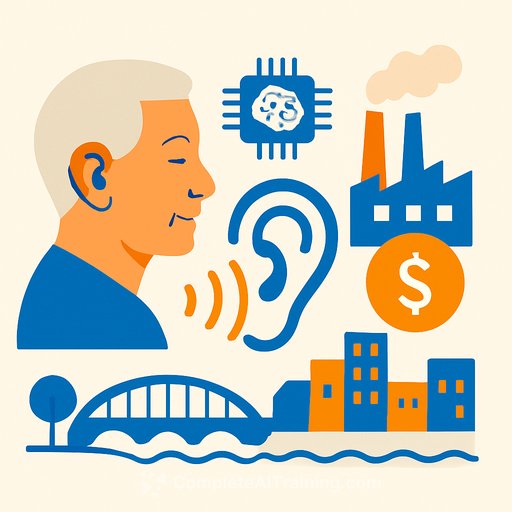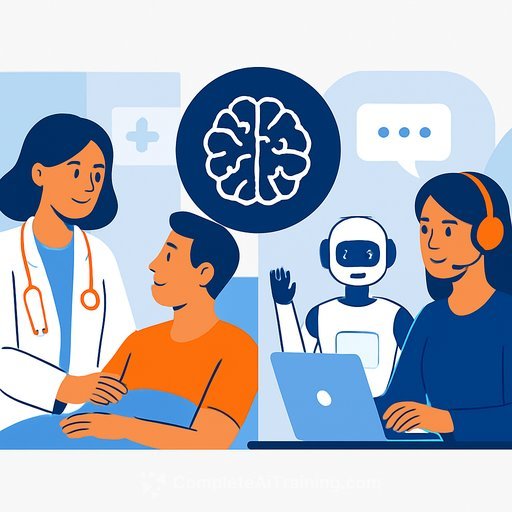Artificial Hearing: How AI is being used in hearing aids
Artificial intelligence is moving from headlines to clinic rooms. In Wisconsin Rapids, patients at the Beltone Clinic are trying hearing aids with on-device AI that helps them hear speech more clearly in busy, real-world environments.
The core update is a new chip inside the devices. It analyzes what you're hearing in the moment and reduces the sounds you don't want-traffic, clattering dishes, HVAC-so voices come through cleaner.
What's new at the Wisconsin Rapids clinic
Hearing specialist Bryan Kroeger puts it simply: "It's taking millions of different sound samples, in real-life environments, to distinguish speech from other unwanted noises."
Concerned about losing control to algorithms? Kroeger is clear: "AI is designed to assist, and not take over the hearing aids. I mean, the user can still manually make adjustments on their own."
How the AI helps in everyday listening
The chip learns patterns from typical environments-restaurants, offices, sidewalks-and adjusts in real time. That means less effort trying to pick a voice out of a noisy room and fewer moments of "Can you repeat that?"
It's not one-size-fits-all. Activity level, typical listening situations, and personal preferences matter. As Kroeger notes, "Some people are more active than others… depending on the person, they might not want to utilize all of that technology as well."
Streaming from public spaces
These aids can stream audio directly from places like libraries and churches that offer assistive listening systems. That puts the speaker's voice right in your ears, bypassing the room's acoustics and distance.
If you want a primer on assistive listening options (loops, Bluetooth systems, and more), see the National Institute on Deafness and Other Communication Disorders overview: NIDCD: Assistive Devices for People with Hearing Loss.
Cost, coverage, and battery life
Pricing is similar to regular premium hearing aids: $4,000-$7,000 for a pair, depending on features and services. Some plans help with funding, so it's worth checking benefits before you buy.
The devices are rechargeable and last up to 30 hours on a charge, so most users can get through a full day without thinking about batteries.
Who benefits most
- People who struggle to hear speech in noise
- Patients who want manual control with smart automation in the background
- Anyone who attends venues with assistive listening or broadcast audio
- Clinics looking to offer clearer speech-in-noise performance without adding complexity for users
Quick facts
- On-device AI separates speech from background noise in real time
- Manual adjustments remain available
- Fittings can be customized to lifestyle and preferences
- Direct streaming from select public spaces (e.g., libraries, churches)
- Battery life: up to 30 hours; fully rechargeable
- Typical price range: $4,000-$7,000; some insurance plans may contribute
For healthcare and research professionals
Expect stronger speech-in-noise outcomes, more granular fitting profiles, and the need to set clear expectations about what AI can and can't do. The tech reduces listening effort, but counseling still matters-especially for patients moving from older analog or basic digital aids.
If you're evaluating AI upskilling for your team, explore role-specific learning options here: Complete AI Training: Courses by Job.
Your membership also unlocks:










